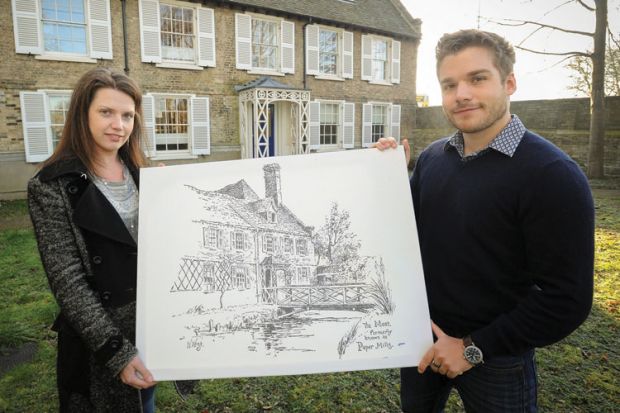Source: SWNS
Pressing matter: the mill may have had a role in 16th-century publishing
An academic couple have published a paper inspired by the forgotten history of their first home together – which may have unearthed some intriguing new details about the world’s oldest publishing house.
Leah Tether is principal lecturer in publishing at Anglia Ruskin University. Her fiancé, Benjamin Pohl, is a DAAD postdoctoral fellow in medieval history at the University of Cambridge. When they moved into a 19th-century flat alongside a stagnant brook in Cambridge, it turned out that the building formed part of a complex known as the Old Paper Mill.
The name, said Dr Tether, “piqued our interests as book historians”. Although they initially assumed that the name was relatively new, they soon discovered that it “had retained the name continuously, though the paper mill had been here for a maximum of five years in the 1550s”.
As a literary scholar and a historian specialising in the Middle Ages, Dr Tether and Dr Pohl had never expected to collaborate on research and “felt a little out of [our] depth” in the 16th century. They embarked on the project as “a little personal thing we wanted to find out, but which turned out to be important”.
They discovered that the mill was one of only two thought to have been in existence in Britain before 1588 – more specifically one attributed to a Protestant known as Remigius, who was fleeing persecution in Germany.
A range of material in the university archives and the Parker Library at Corpus Christi College – leases, indentures, details of debts, even letters from the paper-maker himself – enabled them to track the rise and fall of the mill in far greater detail.
Comparing this with the history of Cambridge University Press suggests that Remigius’ short-lived paper mill was “connected to the birth of CUP itself and part of the business case was that it could service the needs of CUP”, Dr Tether said. That would also make it “part of the first attempt to establish a publishing industry outside London”.
Such findings and speculations have now been published in a paper titled “Remigius Guidon, Cambridge’s Old Paper Mill and the Beginnings of the Cambridge University Press, c.1550-59”, which recently appeared in Transactions of the Cambridge Bibliographical Society.
Although the couple are shortly to move to Ghent, Dr Tether said that the Old Paper Mill had proved “a nice place to live and has also fed into our work. It has given us a lot to think about and given us a lot of pleasure”.
Register to continue
Why register?
- Registration is free and only takes a moment
- Once registered, you can read 3 articles a month
- Sign up for our newsletter
Subscribe
Or subscribe for unlimited access to:
- Unlimited access to news, views, insights & reviews
- Digital editions
- Digital access to THE’s university and college rankings analysis
Already registered or a current subscriber? Login





